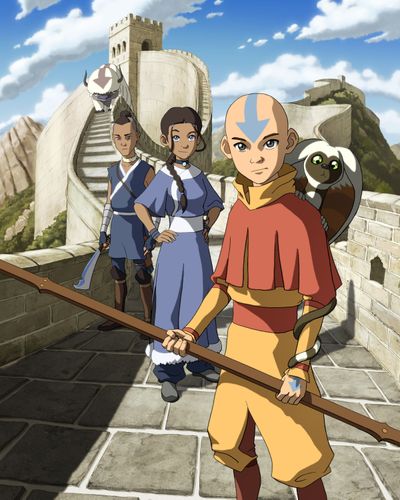Filling the ‘Avatar’-shaped hole in your heart

On May 15, animated fan-favorite “Avatar: The Last Airbender” made its long-awaited return to Netflix. Now that it’s been four weeks, many fans are finished with the series (or are nearing the end) and wondering,”What now? What will life be like without Aang, Appa and the whole crew?”
(If you haven’t watched “Avatar,” go breeze through the 61 short episodes available on Netflix.)
This is not a new dilemma; “Avatar” is such a stellar show that finishing it has always left viewers somewhat lost. It feels as though nothing can ever replace it. And while only rewatching the whole series again will perfectly capture that feeling (or maybe watching the sequel series, “Legend of Korra”), there is one show that strikes many of the same notes: Netflix’s animated series “The Dragon Prince.”
At face value, “The Dragon Prince” appears to be the result of applying “Avatar”’s world-building strategies applied to a Tolkien-esque fantasy universe instead of the Asian architectures, martial arts and cultures that “Avatar” was so interested in.
The show takes place on a continent split in two: one half magic (inhabited by elves and dragons), one half human. The world is home to six elemental sources of magic power: Sun, Moon, Stars, Sky, Earth and Ocean. Sound familiar? There also is dark magic, which feeds on the essence of the other six and is wielded by a rare few humans.
The similarities derive in part from the show’s creators. “The Dragon Prince” was written by Aaron Ehasz, who was co-creator of “Avatar.” Former “Avatar” director Giancarlo Volpe is a director and executive producer of the show.
Netflix’s new fantasy world might distinguish itself with its quirks and characters, but the structure of the show, which consists of episodic themes, light and childish humor and epic high-stakes adventure, is still very similar to the “Avatar” fan.
“The Dragon Prince” follows Callum, stepson of a human king, and his kid brother as they team up with a young Elven assassin to stop an imminent war between Humans and Elves (the latter of which can interact with the primal magic). The cast of characters is in every way diverse and interesting. Character dynamics are nuanced, and their developments are captivating. Themes like death and attraction are prominent, and they are handled in a way very much catered to younger audiences.
For viewers coming off “Avatar,” there are a few key things to note. “Avatar” was written in the pre-streaming era, whereas “The Dragon Prince” is made for binging. What this means for the shows is that almost every episode of “Avatar” is in some sense self-contained and satisfies with some kind of ending, while an overarching plot is slowly developed in the background. “The Dragon Prince” takes a more contemporary approach to storytelling, weaving several major plot lines and inching them along each episode. This makes it almost impossible to stop watching. A whole season can fly by in an evening.
While “The Dragon Prince” isn’t as widely regarded as “Avatar,” which is one of the best animated TV series of all time, it is a very satisfying way to move on from Aang’s epic adventure. It learns a lot from “Avatar” and does its best to carve out a new spot for itself, which I think it succeeds at doing. Plus, with three seasons released and more on the way, it has the excitement of being new and ongoing.